Trouble finding Tri-Cities child care? You’re not alone and why it may get worse
Finding affordable child care that also happens to be convenient and accessible is a struggle for many Tri-Cities families.
With the recent loss of federal funding aimed at keeping costs down and child care centers open during the COVID pandemic, many parents could soon find themselves paying even more.
While the largest concerns from experts are about the loss of federal money, local providers told the Herald they’re still struggling to manage rising wages, high inflation and competition from other businesses and industries poaching employees.
An estimated 97% of child care providers in Washington received those federal funds.
Even with state legislators filling in lost funding, it is likely many providers in the state will be impacted, at least partially, by the changes.
State lawmakers have been told the solution to the state’s childcare crunch is going to require serious long-term planning and some delicate balancing, or it could hurt families and providers who don’t use subsidized care centers.
There are two categories of child care providers in Washington: child care centers and child care family homes.
Centers are companies like Kindercare or daycare businesses that can accommodate a large number of students. Family Homes are child care providers who operate smaller groups out of their own home.
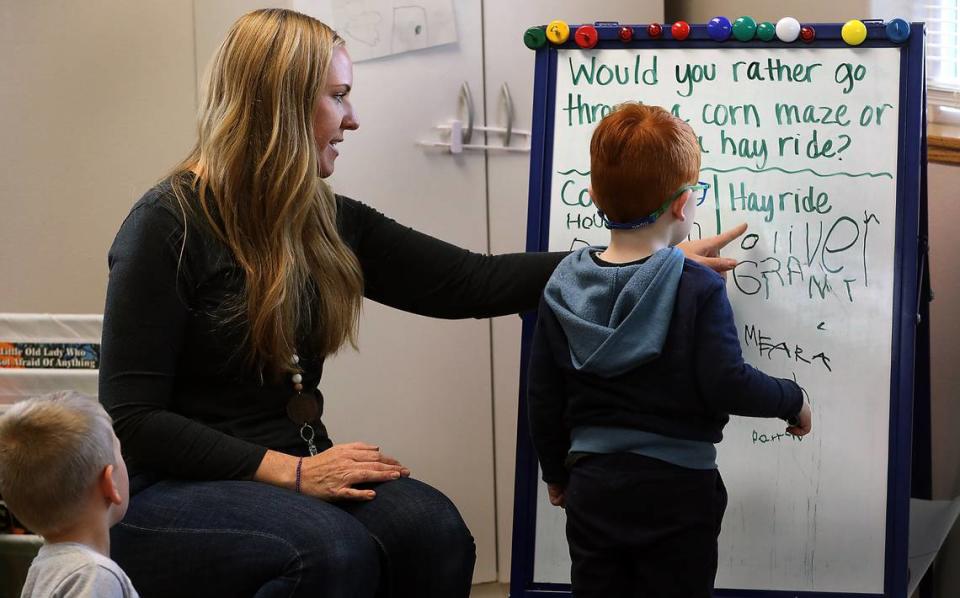
Local concerns
Locally, providers tell the Herald that the same concerns families have in their day-to-day lives are impacting the affordability of child care.
Level Up Learning offers a full-day preschool and a part-day Montessori class. Owner Leslie Hieb said it’s more difficult than ever to balance providing high quality child care within the budgets of the families they serve.
Little things like the cost of snacks begin to add up over a year. Inflation has hit nearly every food and cleaning product they use, as well as classroom supplies.
Then there are annual raises to minimum wages for employees which she tries to keep pace with in order to remain competitive. The expenses add up.
Many of Level Up’s parents work at either Kadlec Regional Medical Center or the Hanford nuclear site, Hieb said. They have good paying jobs, but they’re still struggling to make ends meet, so raising tuition isn’t something she’s keen to do.
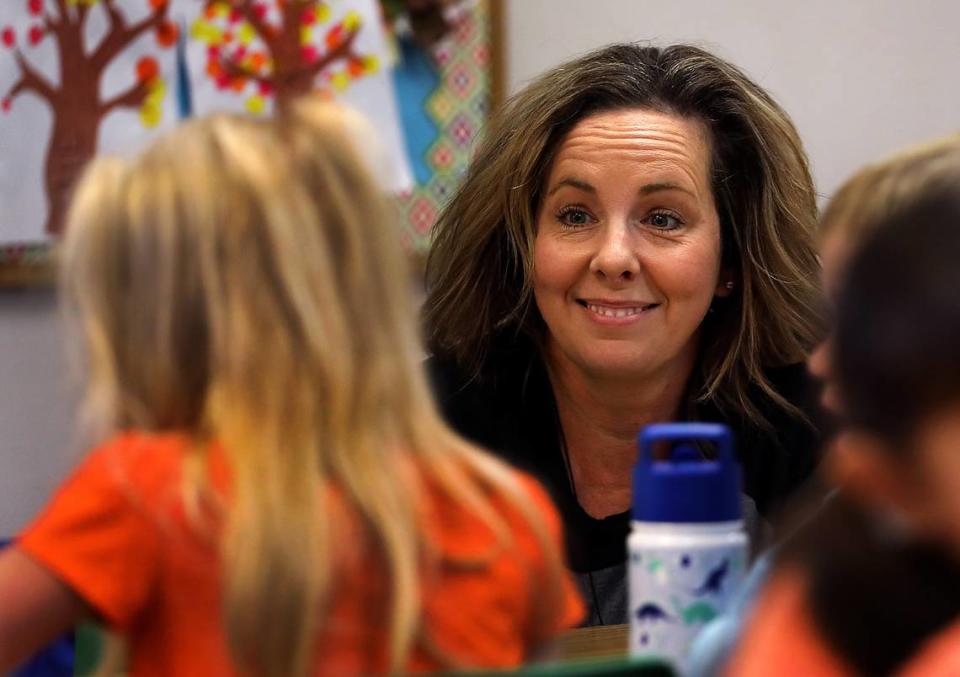
Hieb said she probably hasn’t kept up with rising costs as much as she should have, but she knows parents are having a hard time too.
“It is a hard balance because you don’t want to bankrupt the families,” she said.
Parents in the Tri-Cities pay just below the state average for child care for children under 5, according to the nonprofit group Child Care Aware.
Tri-Cities parents spend an average of 20-21% of their income on child care, compared to the state average of 23%. Locally that comes out to about $11,000 per year for each child.
That’s almost enough for your kid to attend college in the Tri-Cities while living at home, with Washington State University-Tri-Cities estimating current costs at $6,350 per semester, or $12,700 a year, for tuition, fees and books.
Another major concern, especially for small businesses, is large child care competitors moving into the area who can afford to take in more students and pay much higher wages.
“For me, what hurts us more is the wages, with minimum wage always going up, I am going to have to raise my prices a little bit, not a lot but I want to keep teachers,” she said. “Another thing that hurts us is the Bezos Academies are coming in. I’ve lost some employees to them ... because they can start off paying an assistant at $24 (per hour).”
Hieb said she’s had a hard time competing with an entity like Bezos Academy, a nonprofit founded by billionaire Amazon founder Jeff Bezos. The Pasco academy opened earlier this year and quickly began offering compensation packages Hieb said small organizations simply can’t match.
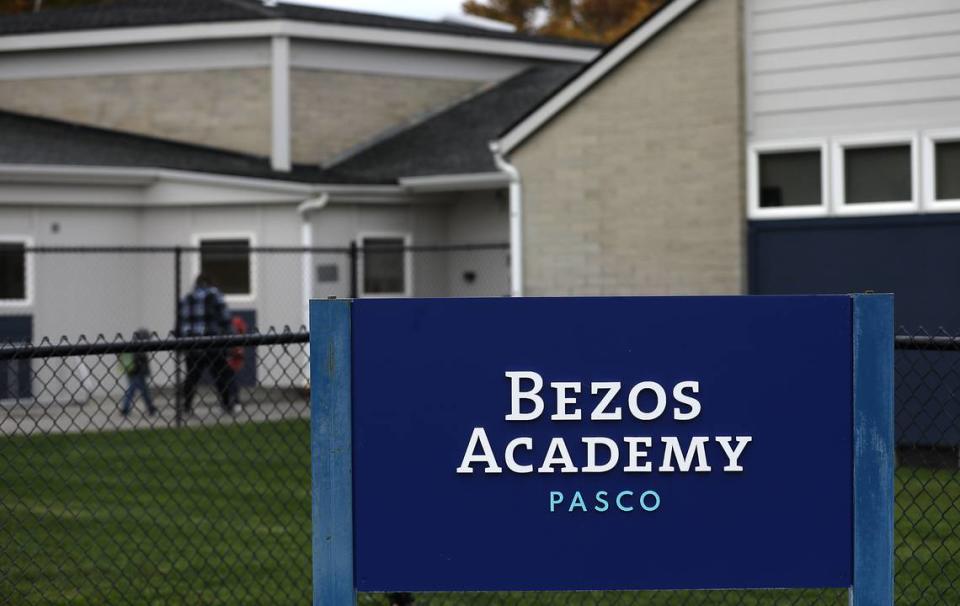
That’s a major concern in the state because the childcare workforce still hasn’t recovered from pandemic worker losses, according to a recent Child Care Collaborative Task Force study commissioned by the Washington Legislature.
A recent assistant teacher listing for the Pasco Bezos Academy had a salary range of $25 to $34 per hour with a $2,000 signing bonus.
A current Food Service Assistant listing has a pay range of $21 to $31 an hour, and a Montessori Lead Teacher opening has a listed salary range of nearly $65,000 to $104,000.
Bezos Academy is free for families who have to meet an income threshold.
The need is absolutely there for services like Bezos Academy, with only an estimated one-third of all Tri-Cities children under 5 who need it having access to child care. But it’s put other local small business owners in a tough spot trying to retain staff.
The average salary in Eastern Washington in 2022 for a lead teacher or assistant director at a child care center was about $35,000.
Current job openings in the Tri-Cities listed salaries for assistant teachers at local preschools ranging from $16 to $19 per hour, and for teachers $19 to $22 an hour.

Some organizations receive subsidies from the state, or previously from federal pandemic programs, to help offset rising wages for staff.
The state task force said that these subsidies can hurt child care center owners, like Hieb, whose parents might not meet low-income thresholds, but are still struggling with costs. Those costs have to be passed on to parents by raising fees to compete.
The Child Care Collaborative Task Force is assessing needs after the pandemic and working to find potential solutions state lawmakers can apply to help ease the child care crisis.
The task force told legislators in its report that the only way to rein in the rising costs of child care without hurting private providers is to take a two-pronged approach. The state needs to:
Continue subsidizing salaries for centers and bills for family homes.
Provide direct aid to parents to offset the cost of care at the center of their choice.
Those solutions don’t immediately address the need for vastly more child care providers in the state, but the report said that providers and employees making livable wages could help staunch the loss of workers and entice more people into the field.
Location of child care
Hieb said another area her parents are really struggling with is trying to find care near their work.
The task force estimates that more than 60% of Washington parents live or work in an area without access to adequate child care. More than 70% of parents said it impacted their ability to work.
The Washington economy loses an estimated $6.5 billion annually in opportunities for business and consumer spending due to inadequate child care, the report said.
“I know there’s a huge need for child care, I’m actually going to expand to Richland because there’s a need, especially over there for the nurses, but I’m also trying to keep my prices not extremely high,” Hieb said.
Hieb said seeing parents with jobs at Hanford and working in the medical care struggling to find and afford child care really drives home the point that it’s a crisis impacting everyone.
She opened her part time Montessori program in response to that need, with it designed for parents who need part-time care in order to help find balance with work and home. Rather than having a child attend a full-day program, parents working split shifts or evening hours can juggle care at home more easily, or family members can help in the evening.
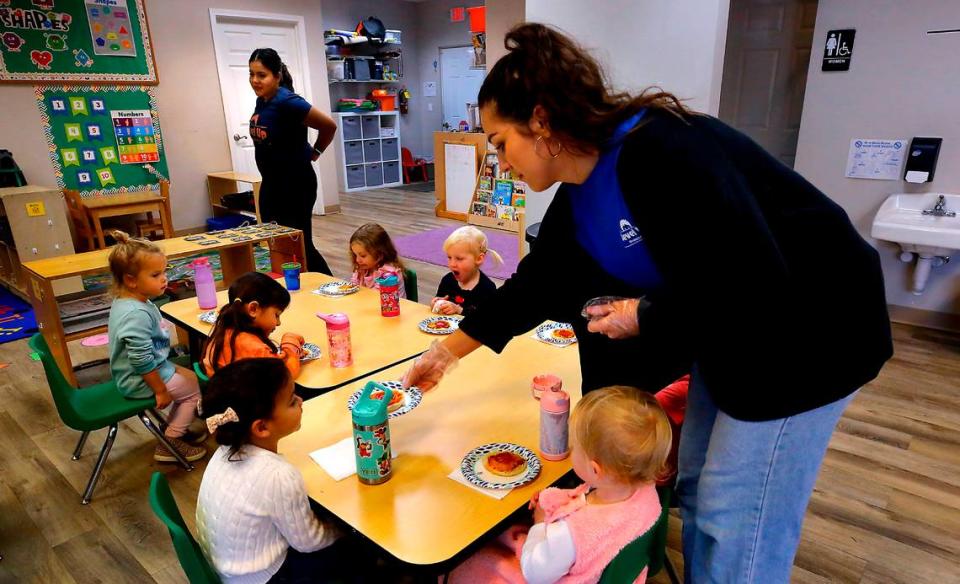
Funding changes
American Rescue Plan funds sent nearly $400 million directly to Washington child care centers and child care family homes to help keep employees on payroll, ensure salaries were competitive enough to retain teachers and pay bills. That funding dried up in October. In all the ARP spent $24 billion nationally to buoy child care through direct payments and other means.
Washington lawmakers saw the drop coming and have been working to replace the funding through the capital gains tax and other means.
While new state funding approved this year won’t completely cover the loss, Washington parents are in a better position than many states that could be looking at what experts have dubbed a “child care cliff.”
Without replacing ARP funds, the state could have lost an estimated 58,000 childcare slots and thousands of providers across the state, according to a study by The Century Foundation.
Laura Valle-Gutierrez, a fellow with The Century Foundation who helped write the “Child Care Cliff” study, said that their study was conducted before the state Legislature finalized funding and that Washington is now in a much more stable position.
For families, this loss in funding wouldn’t be immediately noticeable. Valle-Guitierrez said providers will try to make ends meet first, and then price increases might come later. In the long term though, many could be forced to close.
“A provider may be able to stay open, but they may have a longer wait list,” she said. “In the long run it’s going to result in program closures.”
That risk of widespread closures is significantly lower at the moment in Washington, but the state still requires a more permanent solution. Providers can only absorb costs for so long before they need to pass them on, and then parents will have to decide whether they can afford to keep their kids in child care.
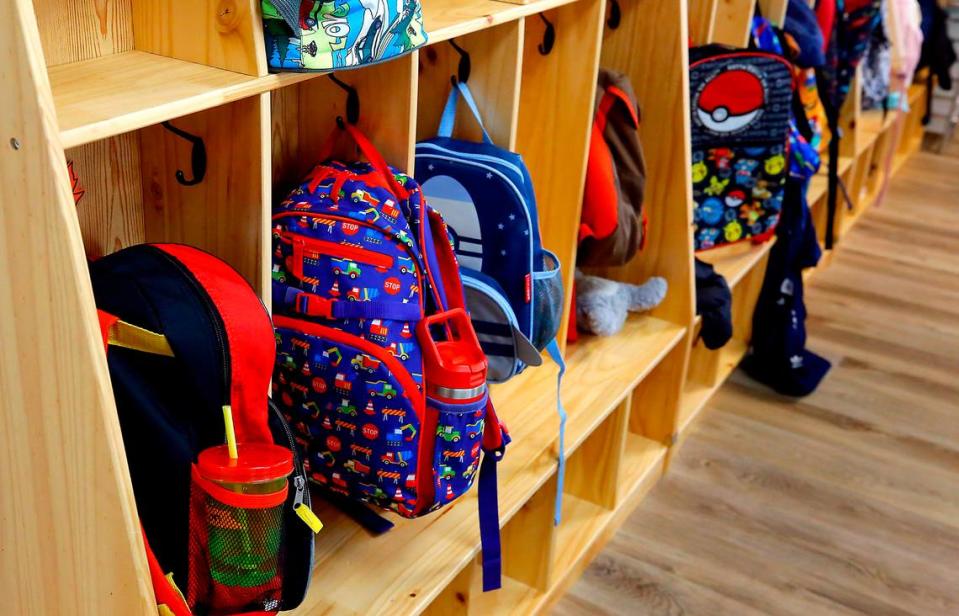
“It’s really disruptive, it’s causing a lot of stress for providers and parents,” Valle-Guitierrez said. “Parents are making hard decisions and trying to make things work. Childcare is an issue that, whether or not anyone sees it, it does effect us all.”
Ultimately children being pulled out of child care due to costs a parent can no longer manage will impact the state’s work force, especially for women.
According to a recent report by the Washington State Standard, women have played a huge role in boosting the state’s workforce participation and overall economic recovery. This “Child Care Cliff” could reverse many of those gains if lawmakers don’t find a long-term solution.
Former Department of Commerce Director Lisa Brown wrote in the forward to the Child Care Task Force report that workforce insecurity is at the heart of the child care crisis.
“The gap between fair pay for child care workers and what parents can actually afford to pay is huge. It is time to address this gap that has always been part of our child care system. Quality early childhood education is a public good that leads to better outcomes for children, while also allowing parents to fully participate in the workforce,” Brown wrote.

Child care desert
Only about 83,000 of the estimated 307,000 children ages birth to 5 years old in Washington are receiving child care, according to data from the state.
In Benton County about 80% of preschool age children are in child care that is subsidized in some way. Franklin County’s share is closer to 87%.
In all, only about 30% of Tri-Cities families that need childcare for children ages 3 to 5 are able to access it. For children younger than 3, access sits at less than 15%.
Few mid-to-large counties in Washington have enough child care spots for more than 40% of families who need care, among them are Yakima, Spokane and King Counties. Yakima has the best access at just 41%.
The rate of school age children, defined as kindergarten through age 12, who need child care is even worse. Only about 9% of school age children in Benton and Franklin counties have access to child care. That number is about on par with most counties in the state.
Since 2018 the Tri-Cities has gained about 20 providers, mostly in Franklin County, according to Child Care Aware.
Statewide child care centers have been getting larger, leading to fewer centers with more children in each. That also impacts neighborhood child care centers and means many parents are traveling farther to access care.
In Benton and Franklin counties, a combined 413 total child care centers and family homes received ARP subsidy funds. That’s almost 100 more than Clark County and about 75 more than Spokane County.
A single parent at the Federal Poverty Line of $17,660 would be spending 71% of their income on child care in Washington.
If a single parent making minimum wage, currently $15.74 per hour, worked 40 hours a week in Washington, they’d be paying about one-third of their income for child care without assistance.
That parent could work 60 hours per week between two jobs at minimum wage, or just under $50,000 annually without overtime pay, and still end up paying a quarter of their pre-tax income.

